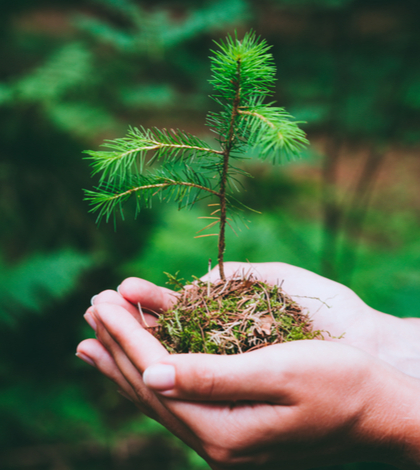Perhaps University of California (UC), Davis Biologist Patricia Maloney and her team of researchers have found a way to harness the determination of sugar pine trees that survived the extended drought of 2012 to 2016 in the Sierra Nevada. Perhaps it’s a new version of survival of the fittest – trees at least.
California’s drought and subsequent bark-beetle devasted more than 129 million throughout the state, though most were in the state’s many forests. But Maloney and her team spent the drought years collecting seeds from 100 surviving sugar pine trees which stood amongst their dead and dying counterparts. Now it’s time to if the 10,000 seedlings they’ve nurtured for the past two years can make the transition back to the forest and remain healthy and viable.
If the seedlings turn out to be as genetically resilient as Maloney thinks and hopes they will be, these trees could be a way to repopulate the forest with trees better able to withstand the threats more droughts and bark beetle outbreaks as well as anything else climate change – and humanity – throws at them. The seedlings have been first cultivated at the USDA Forest Service’s Placerville Nursery and then moved to the UC Davis Tahoe City Field Station. Now they’re ready to be planted around Lake Tahoe’s North Shore as part of a restoration project funded by the Tahoe Fund and the California Tahoe Conservancy.
“These survivors matter,” said Maloney, a scientist in the UC Davis Department of Plant Pathology and Tahoe Environmental Research Center. “Essentially, these are the offspring of drought survivors. This is hopefully the genetic stock of the future.”
This week Maloney is working with a crew of volunteers from the California Conservation Corps to plant between 4,000 and 5,000 of the seedlings. They are being planted in micro-climates and habitats conducive to their growth and survival. The timing is important – the trees will no longer be watered in their controlled nursery but will instead look to Mother Nature and the coming rain and snow season for their needs.
Maloney is cognizant that the project is a small-scale start but she is excited to track each mother tree to see how it survives. While the sugar pine trees project is bringing more trees to the forest, it also aims to promote more genetic diversity within the trees. After Comstock Era logging removed all but five percent of these trees, white pine blister rust and bark beetles impacted many of those that remained. This significantly altered their genetic diversity at the time. By working with the seeds she and her team collected and nurtured, Maloney thinks the project can help restore the native sugar pines’ genetic diversity.
“Forest tree species have a large capacity for gene flow; they can move long distances,” Maloney said. “Our native tree species have the potential to change.”
A healthy forest is critical to a healthy water source in the years to come. Maloney and her team have incubated and nurtured the heartiest of the Sierra’s sugar pine trees. Now it’s up to Mother Nature’s rain and snow to hopefully rear a healthier forest – survival of the fittest.
 California Water News Daily Your Source For Water News in California
California Water News Daily Your Source For Water News in California


